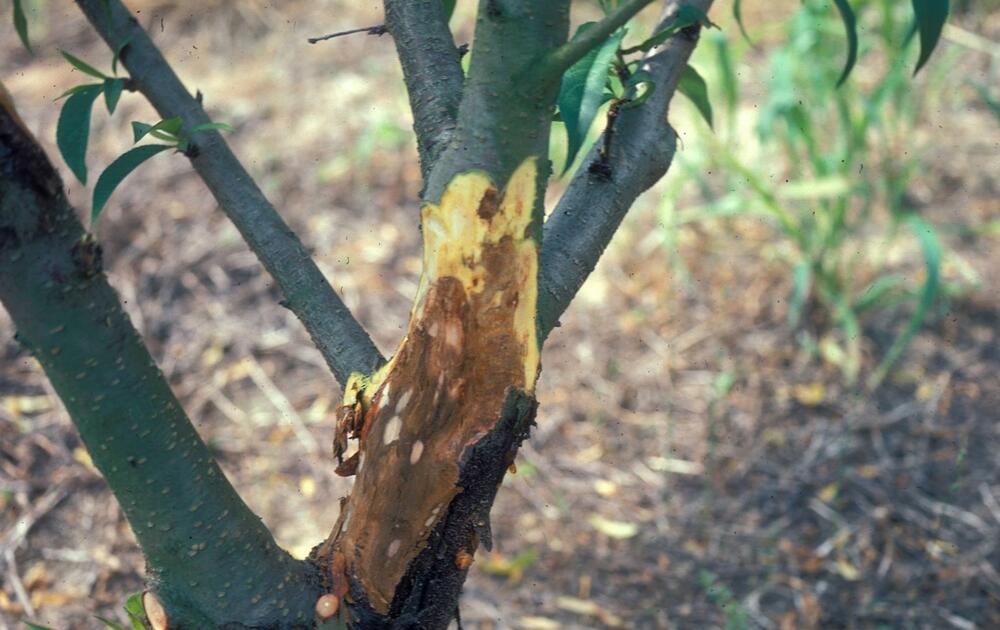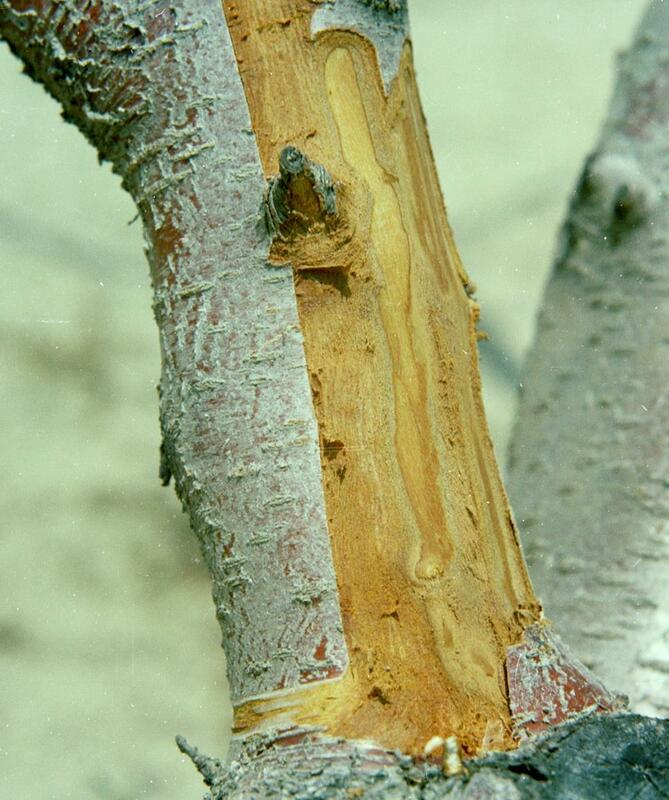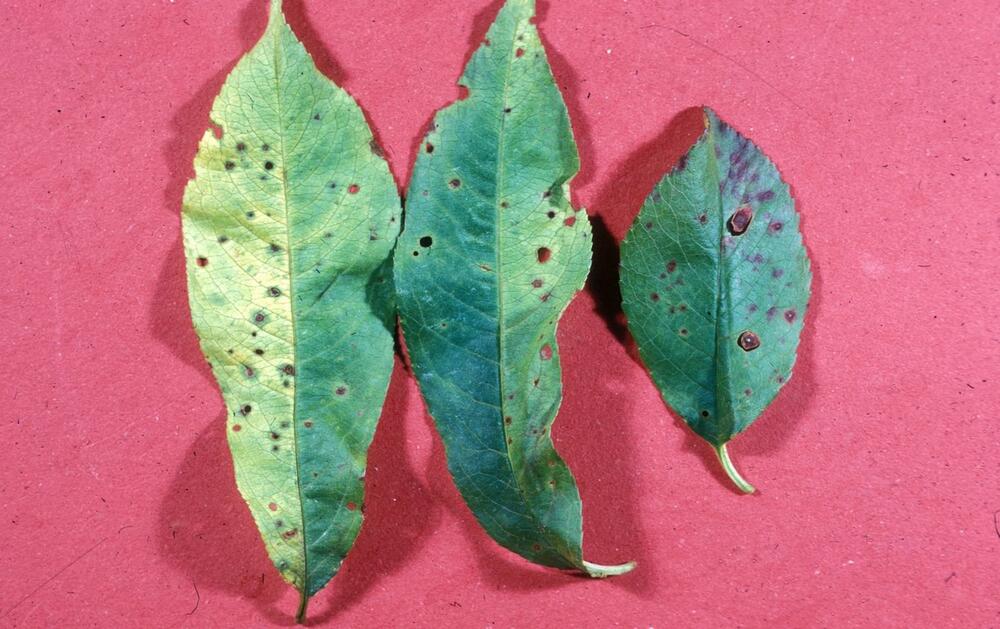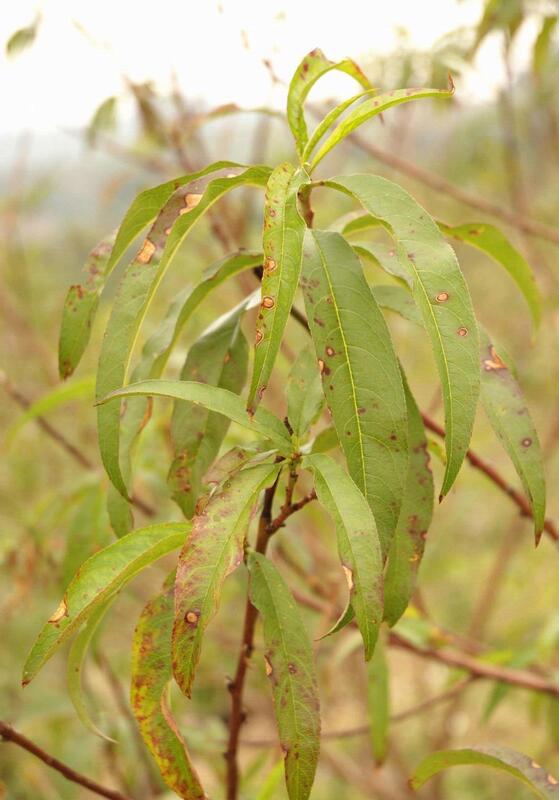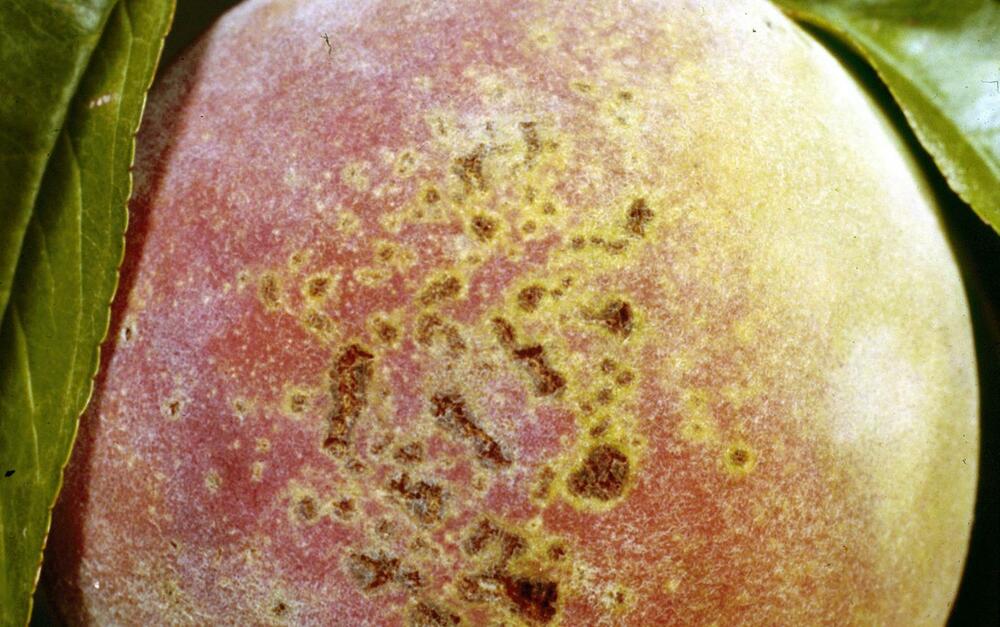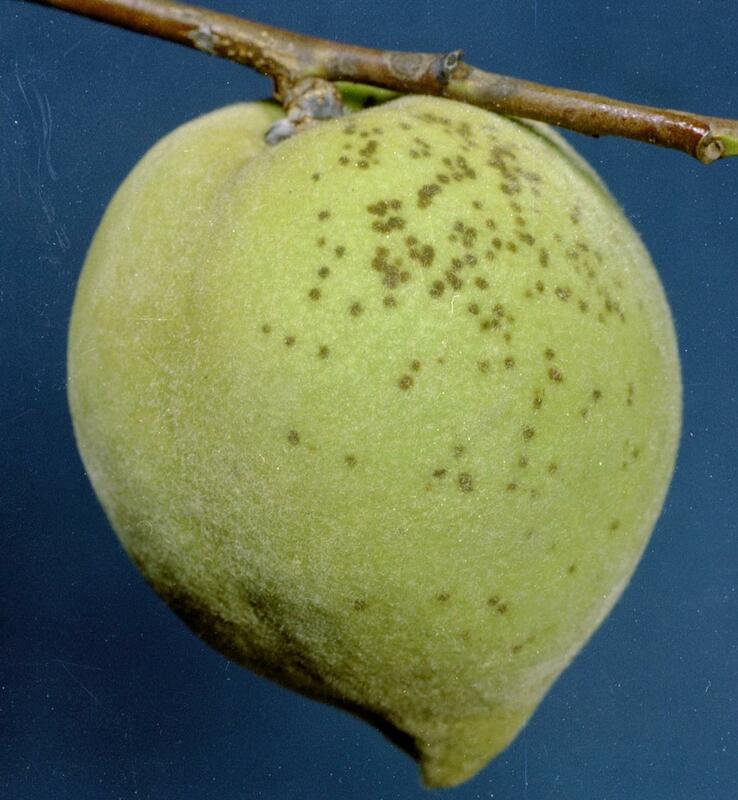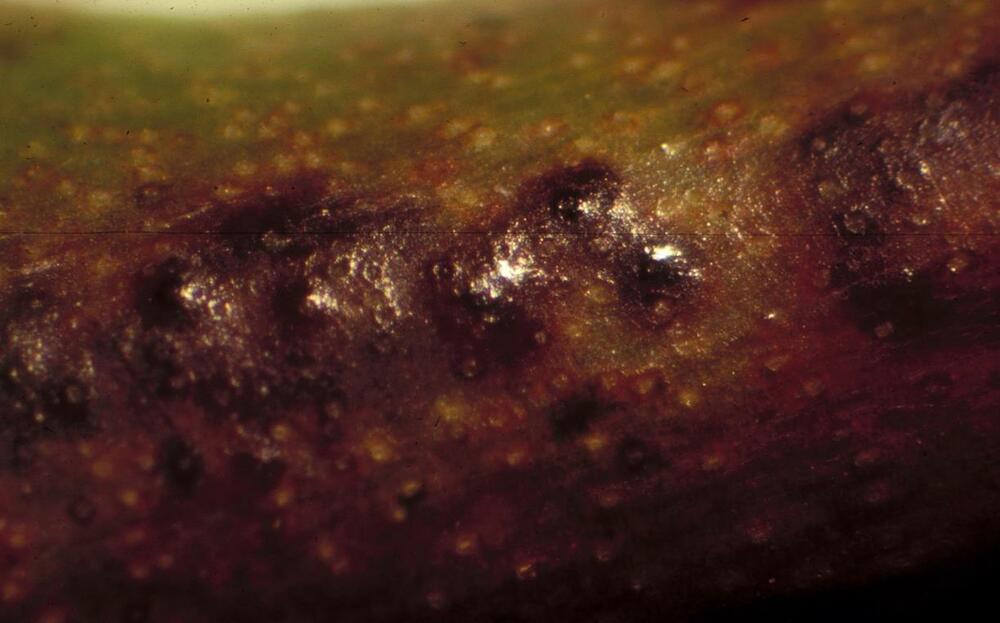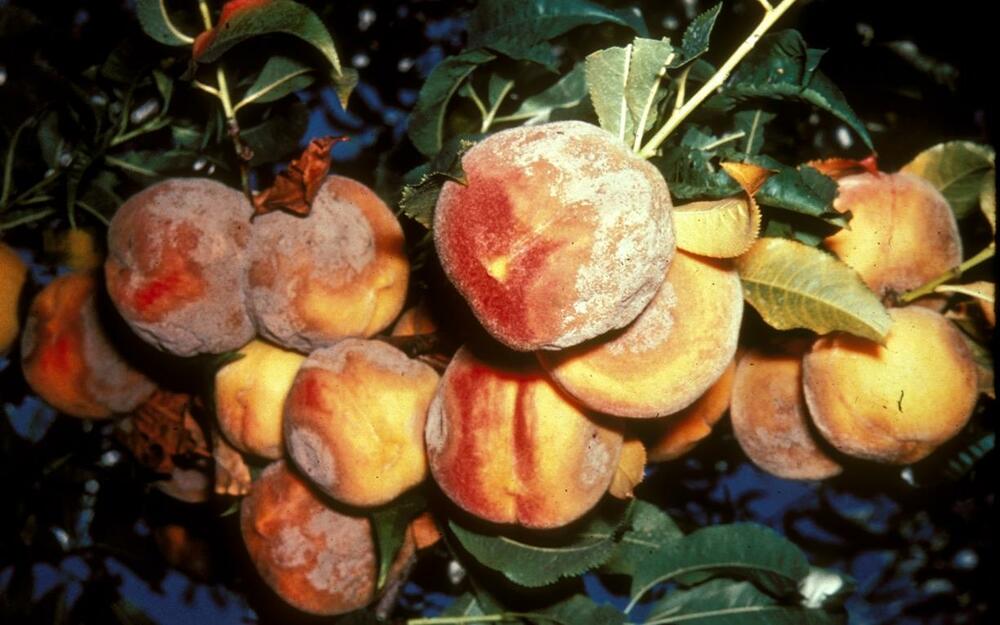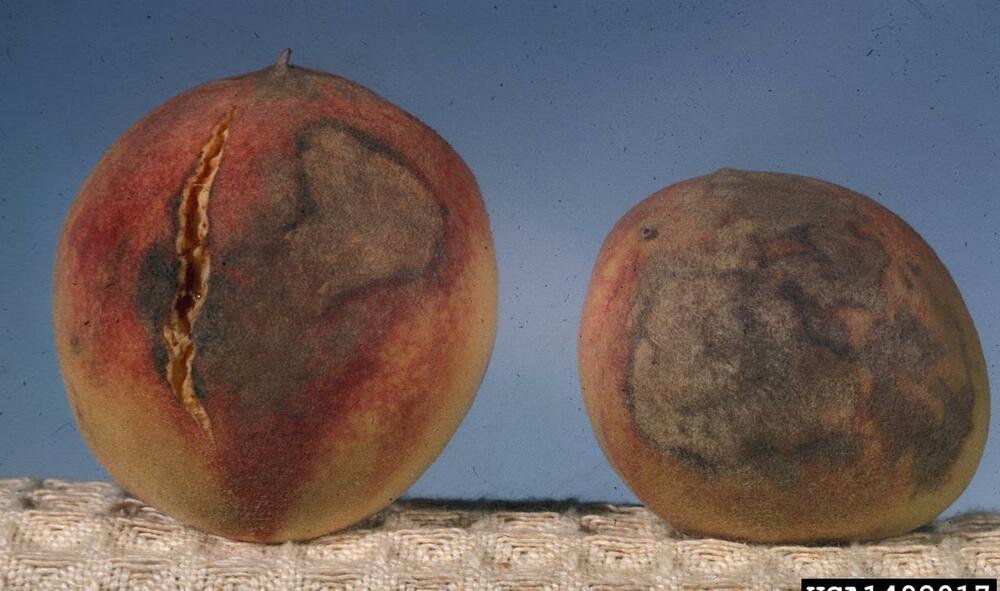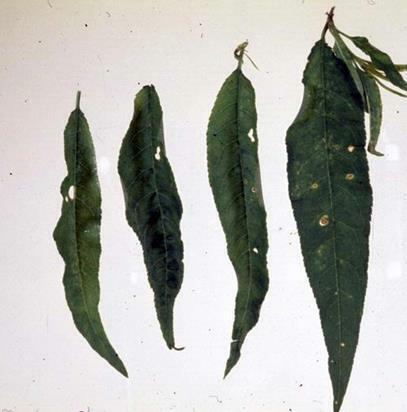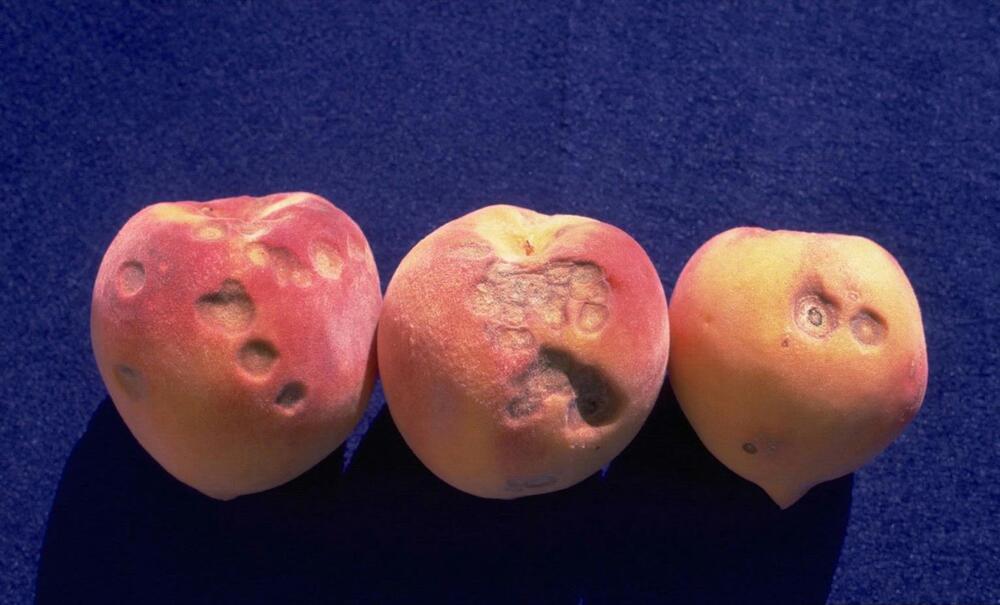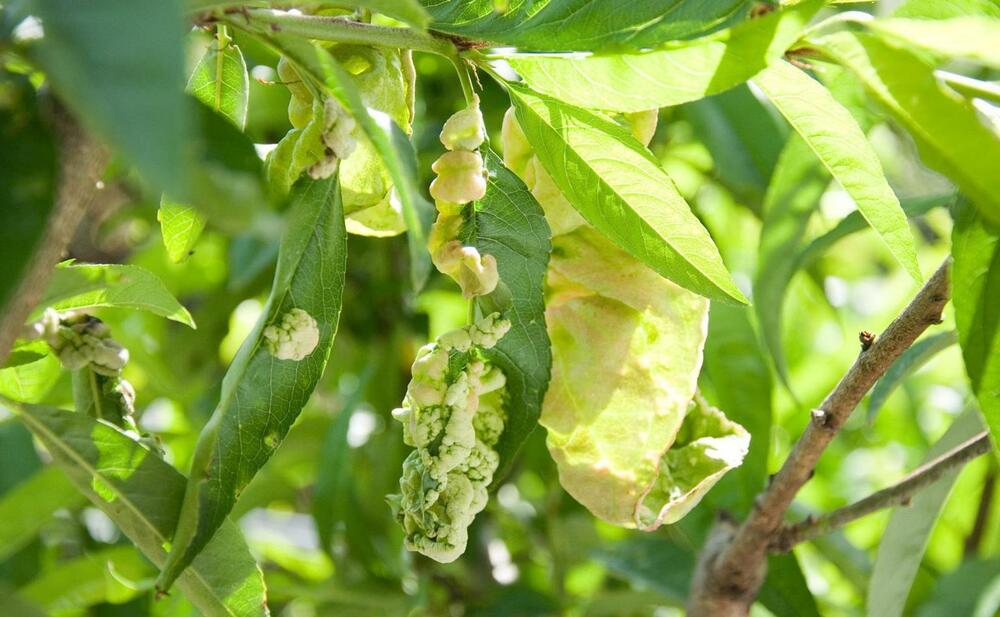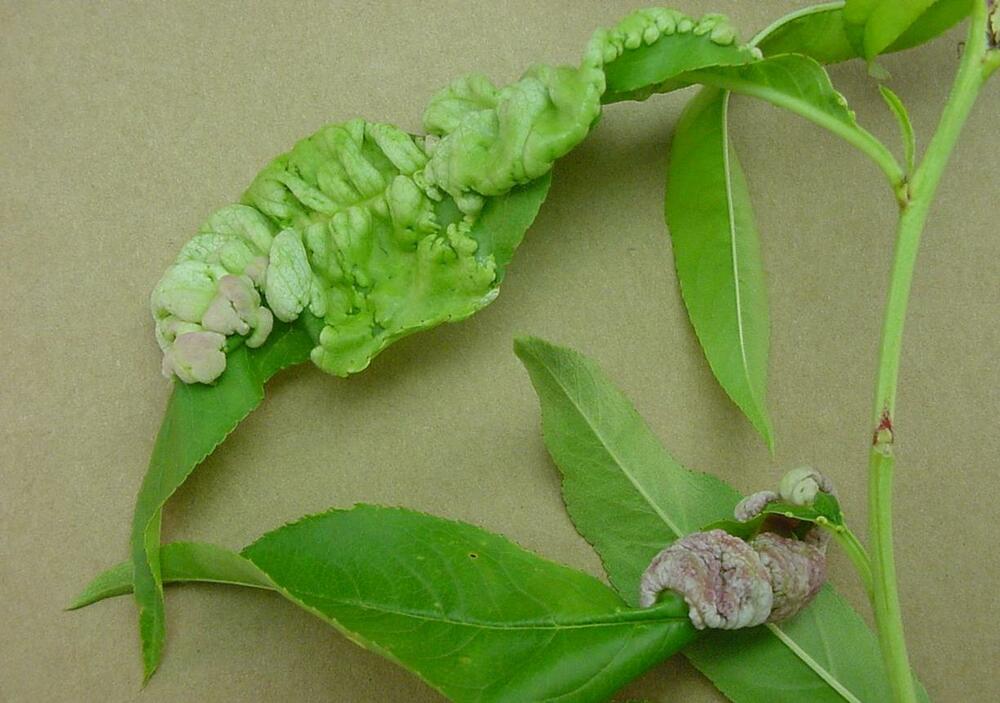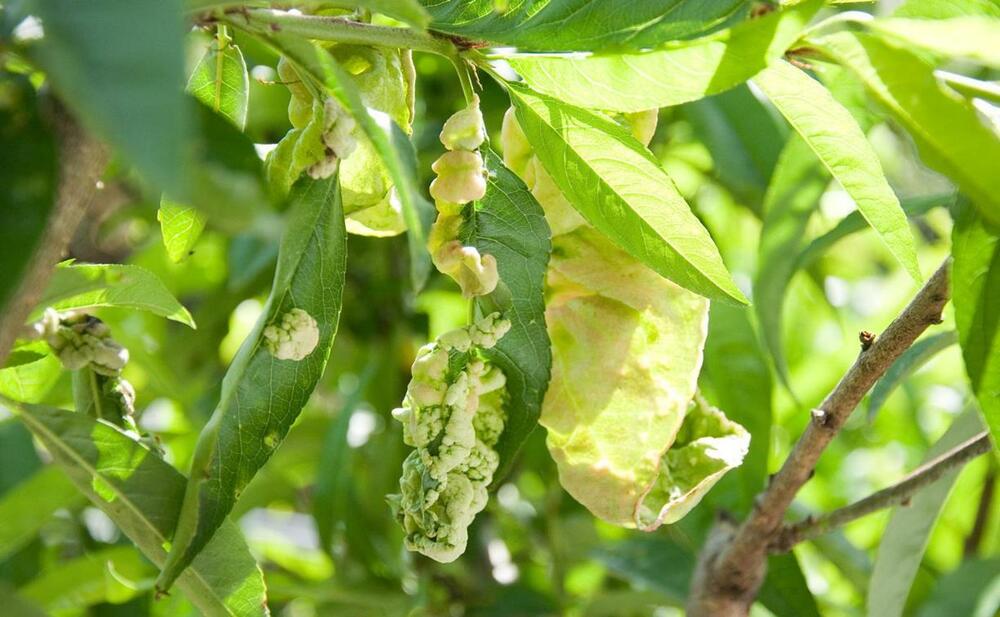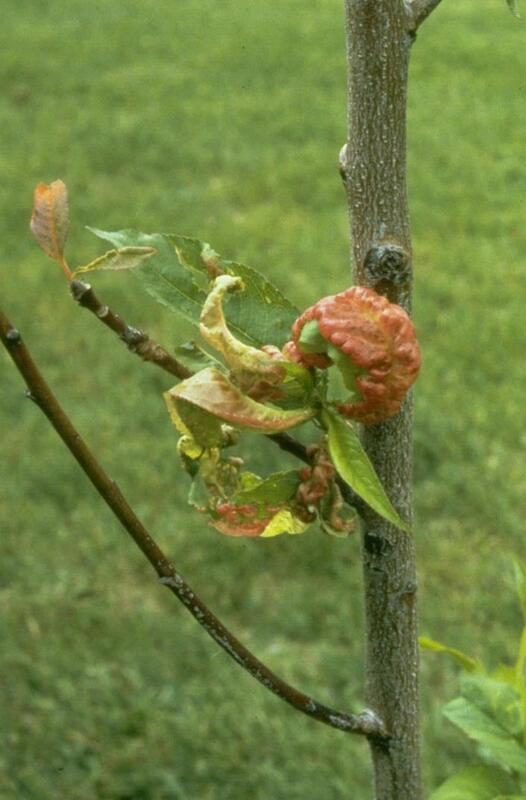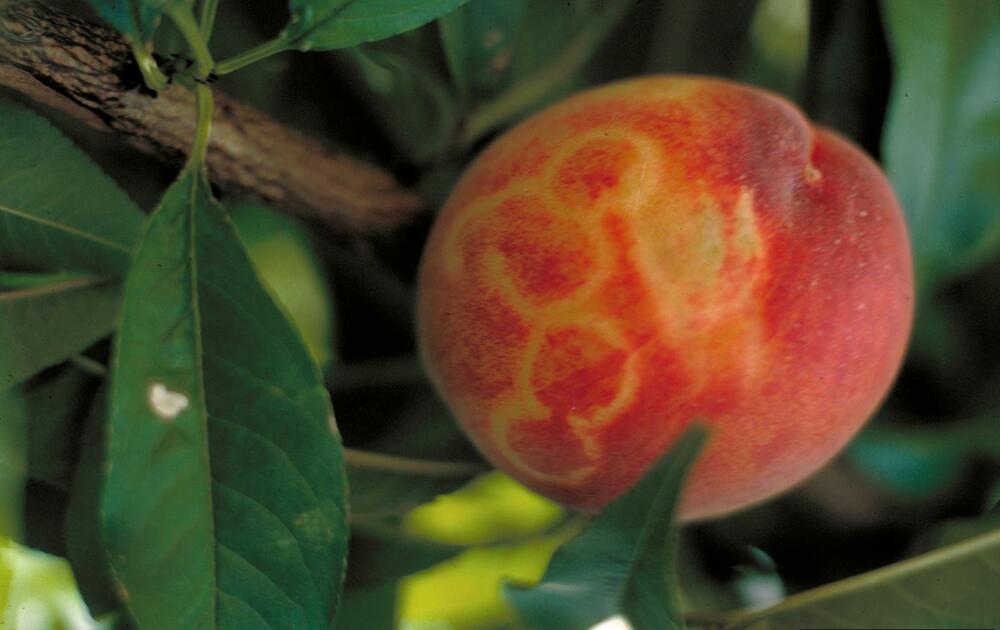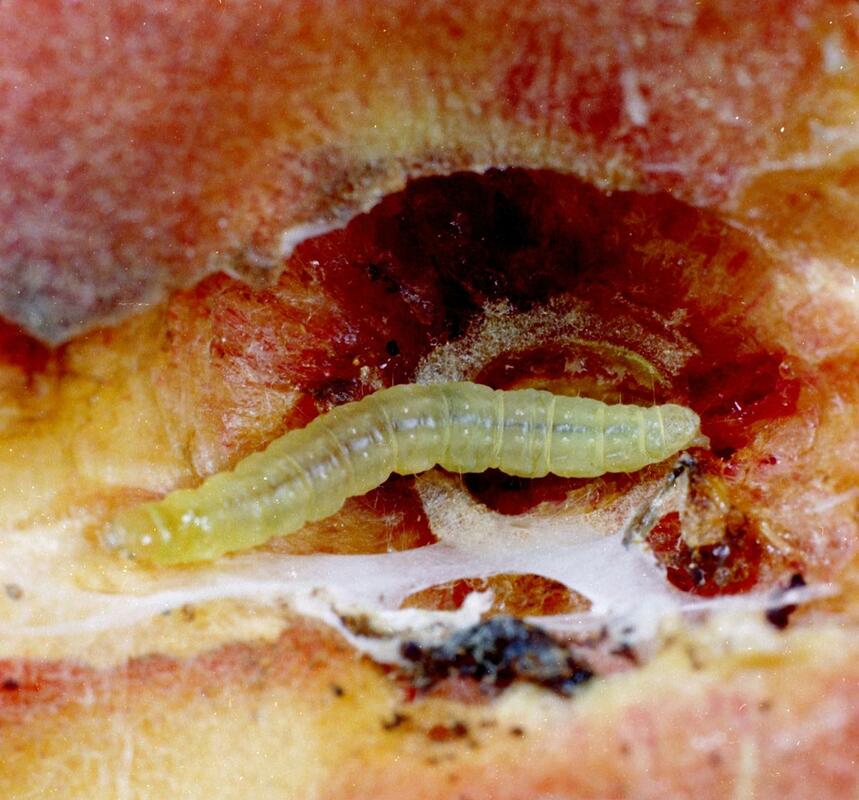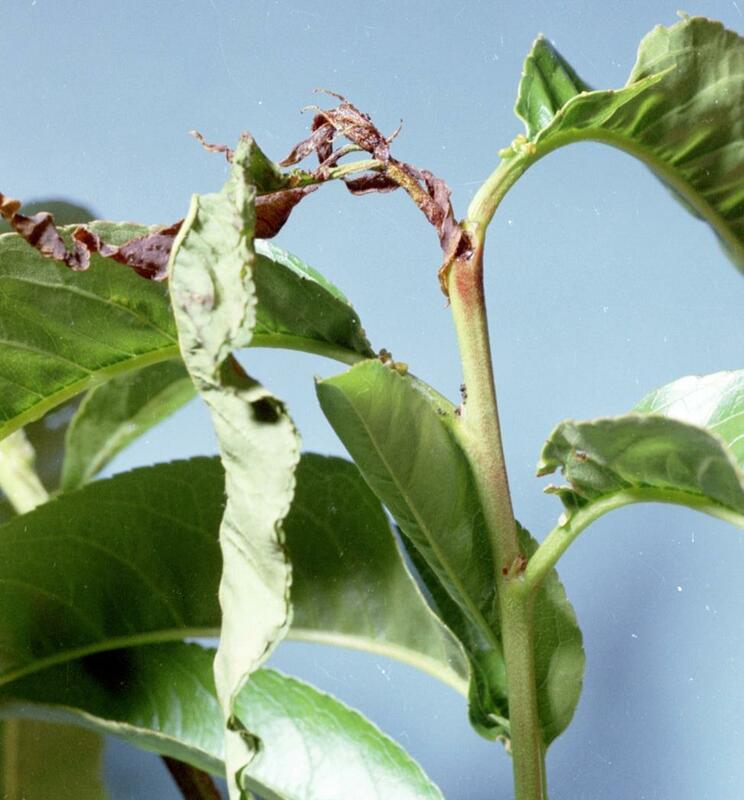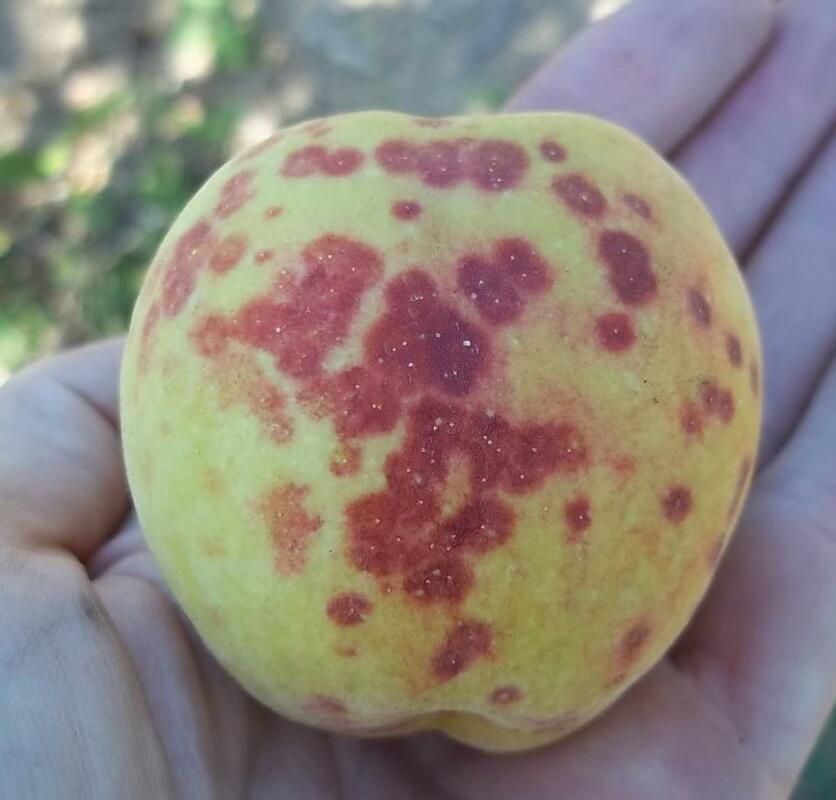Peach
Description
Uses
Propagation
References
Common Pests and Diseases
Diseases
Category : Bacterial
Bacterial canker Pseudomonas syringae
Symptoms
Cankers on twigs at bases of flower and leaf buds, in pruning wounds or at the base of spurs which exude amber colored gum; cankers spread upwards and form sunken areas in winter; if pathogen enters dormant buds they may be killed or open normally in Spring before collapsing in early Summer; infected buds may be symptomless
Cause
Bacterium
Comments
Disease emergence favors high moisture and low temperatures in the spring; young trees particularly susceptible; trees grown in sandy soils that drain poorly are also susceptible
Management
Ensure that a suitable peach variety and rootstock is chosen based on geographic location and environmental conditions to prevent stress to tree which predisposes tree to canker disease; apply protective copper spray to trees before flowering; prune trees in early summer to decrease likelihood of infectionBacterial spot Xanthomonas campestris
Symptoms
Water soaked, angular gray lesions on the underside of the leaves which turn purple and necrotic in the center and cause a shot hole appearance if lesion center drops out; if lesions are present in high numbers on leaves they may become chlorotic and drop from tree; cankers develop on twigs either as raised blisters or as a dark area surrounding a bud that fails to open; in years of severe infection the entire fruit crop may be lost; lesions on fruit begin as small brown, water-soaked lesions which may exude gum
Cause
Bacterium
Comments
Periods of frequent rainfall during late bloom and early petal drop increase likelihood of fruit and leaf infection; infection is rare during hot, dry weather
Management
Avoid planting susceptible peach varieties in areas where disease is known; once disease is visible it can be difficult to control, protective copper applications in the Fall prior to leaf drop and/or application in early growing season may help prevent the disease; care should be taken as peach trees are very sensitive to copperCrown gall Agrobacterium spp
Symptoms
Galls on roots and/or crown of tree which can range in size from so small they are not visible to the naked eye up to 10 cm (4 in) in diameter; galls first become visible as white, fleshy swellings that grow rapidly and become tan to brown in color; galls typically develop at the site of a wound and new galls form adjacent to old ones the next year
Cause
Bacterium
Comments
Infection with crown gall begins at the site of plant wounds; disease emergence is favored by poorly-drained, alkaline soils and previous feeding damage by nematodes
Management
Chemical control of the disease is generally ineffective; an effective bacterial biological control is available for commercial production; cultural control methods include: planting only certified, disease-free material, planting peach in well-draining soil, rotating infected fields with a non-host before peach is planted and also using good sanitation practicesScab Cladosporium carpophilum
Symptoms
Small, green to olive circular spots on surface of fruit, usually close to stem end, which enlarge, darken and develop a green or yellow halo; lesions may coalesce and cause fruit surface to crack; lesions on infected green twigs are hardly visible to start off with but become brown with a raised border before turning purple or dark brown; infected leaves develop angular or circular lesions on the lower surface which are initially a similar color to the leaf but turn olive green as they mature; leaf lesions may coalesce to form chlorotic patches; defoliation may occur
Cause
Fungus
Comments
Fungus overwinters in in twig lesions or on bark surface
Management
Control currently relies completely on the use of fungicides; pruning the tree canopy promotes good air circulation and allows light to penetrate which can help control scabCategory : Fungal
Brown rot Monilinia fructicola
Symptoms
Brown discoloration of fruit skin and inner tissue; fruit skin wrinkled; collapsed flowers exuding sap from their bases; tan cankers with dark edges on twigs; gray-brown spore masses may be present on cankers
Cause
Fungus
Comments
Fungus survives in mummified fruit on the tree, blighted blossoms, cankers and infected twigs; blossom and twig blights are promoted by periods of wet weather
Management
The currently most effective method of controlling brown rot is through the application of appropriate protective fungicides timed so that they are applied when the susceptible flower parts are exposed or after a wet period; avoiding sprinkler irrigation protects the leaves and flowers from wetness that promotes the disease. Cultural control methods include: removing mummified fruit from tree, pruning infected twigs and reducing plant stress by providing adequate levels of water and fertilizerRust Tranzschelia discolor
Symptoms
Pale yellow-green spots on both upper and lower leaf surfaces which are angular in shape and turn bright yellow in color; spots on lower leaf surface develop orange-red spores
Cause
Fungus
Comments
Fungus overwinters in twigs or in leaves which remain attached to the tree
Management
Rust can be prevented by spraying trees with protective fungicides; application is usually carried out one, two and three months before harvest in areas prone to early season outbreaks of the disease and after harvest in areas where disease is less problematic or emerges later in the seasonShot hole disease Wilsonomyces carpophilus
Symptoms
Brown lesions with purple edge on fruit, twigs and buds; holes in leaves due to lesions which have dried and dropped out; brown lumps developing in the center of lesion (visible with hand lens); buds turning brown or black and exuding sap; tan lesions with brown margins which exude sap on twigs
Cause
Fungus
Comments
Disease emergence favors wet, windy conditions
Management
Application of Bordeaux mixture before rains in Fall are sufficient to protect dormant buds and twigs over winterSilver leaf disease Chondrosterum pupureum
Symptoms
Leaves have a silvery appearance; if infection is severe the leaves may curl upwards and become necrotic; death of individual limbs or entire tree may occur; fungal fruiting bodies appear on the surface of the dead bark
Cause
Fungus
Comments
Pathogen is spread via spores released after rainfall during periods of high humidity and can enter trees through pruning wounds; risk of infection is increased if tree is pruned during late winter or early spring; trees also susceptible when they are heavily pruned
Management
Control of silver leaf disease is difficult and infection can be widespread after rainfall in areas where the disease is present; strategies to reduce the incidence of the disease include: removing all plant debris e.g. pruning waste, stumps, and logs; pruning tree during dry periods and treating large pruning wounds with fungicidal dressingCategory : Viral
Leaf curl Taphrina deformans
Symptoms
Yellow to red patches on young leaves in Spring which thicken and pucker causing leaf to curl; puckered parts of leaf may develop white covering; infected leaves may drop from plant or remain attached and turn dark brown; infection of fruit is rare but causes irregular, raised and wrinkled red lesions
Cause
Fungus
Comments
Emergence of leaf curl is promoted by periods of cool, wet weather during the early stages of bud development
Management
The primary method of controlling peach leaf curl is the application of appropriate fungicides and/or planting resistant peach varieties; no peach varieties are completely resistant to leaf curlPlum pox virus Plum pox virus (PPV)
Symptoms
First expanding leaves exhibit chlorotic veinclearing and veinbanding; lamina twisted and distorted; fruit show dark rings, lines and spots; symptoms on fruti may disappear on ripening; fruit may be deformed
Cause
Virus
Comments
Virus is transmitted by aphids but most common method of spread is diseased plant material
Management
Plant certified healthy material; remove infected trees from orchard; chemical sprays to control aphids may prolong spread of virusCategory : Oomycete
Phytophthora root and crown rot Phytophthora spp.
Symptoms
Poor new growth; leaves chlorotic, small in size and sparse; fruit may be small, brightly colored and susceptible to sunburn; shoots may suffer from dieback and tree will often die within weeks or months of first signs of infection or decline gradually over several seasons; root crown may show signs of decay which develops into a canker; bark of infected crown tissue turns dark brown; cankers may occur on aerial parts of plant
Cause
Oomycete
Comments
Severity of disease is linked to soil moisture content; water-saturated soils promote development of fungus
Management
Management of phytophthora is reliant on good management of water: peach trees should be planted in well-draining soil to minimize the frequency and duration of water saturated soil; trees should be propagated from resistant rootstock and application of appropriate systemic fungicides may provide some protection from the diseasePests
Category : Insects
Fruittree leafroller Archips argyrospila
Symptoms
Leaves of plant rolled and tied together with silk webbing; feeding damage to rolled leaves; defoliation of plant; silk webbing may also be present on fruits and fruits may have substantial scarring from feeding damage; larvae wriggle vigorously when disturbed and may drop from plant on a silken thread
Cause
Insect
Comments
Only one generation of insect per year
Management
Monitor plants regularly for signs of infestation; remove weeds from plant bases as they can act as hosts for leafrollers; avoid planting pepper in areas where sugarbeet or alfalfa are grown nearby; Bacillus thuringiensis or Entrust SC may be applied to control insects on organically grown plants; apply sprays carefully to ensure that treatment reaches inside rolled leavesOriental fruit moth Grapholitha molesta
Symptoms
Wilting shoot tips ("flagging") caused by insect feeding; insect frass may be visible around entry holes burrows in fruit which cause the fruit to be soft, mushy and discolored; adult insect is a small gray moth; larvae are initially white with a black head but turn pink with a brown head as they mature
Cause
Insect
Comments
Orietal fruit moths overwinter as mature larvae inside protective cocoons in protected areas of trees or in leaf debris on the ground; insect may undergo six or more generations per year
Management
Management of the oriental fruit moth usually involves the application of insecticides or the use of mating disruptants; commercial growers should monitor moth numbers using pheromone traps and apply insecticide if average number of moths exceeds 10 per trap; chemical sprays should not be applied within 14 days of harvest
Scale insects (White peach scale, San Jose scale)
Pseudaulacaspis pentagona
Quadraspidiotus perniciosus
Symptoms
Scale insects cause damage by feeding on twigs, branches and fruit on peach trees, injecting toxins into the plant as they do so; if the infestation is heavy, gumming may occur on the bark and twigs or entire branches can be killed; insects are flattened discs, or "scales" with no visible legs; scales produce a white waxy coating which eventually turns black (black cap stage)
Cause
Insect
Comments
Scale insects overwinter in the black cap stage; winged adult males mate with females which retain their eggs inside the body until they hatch











